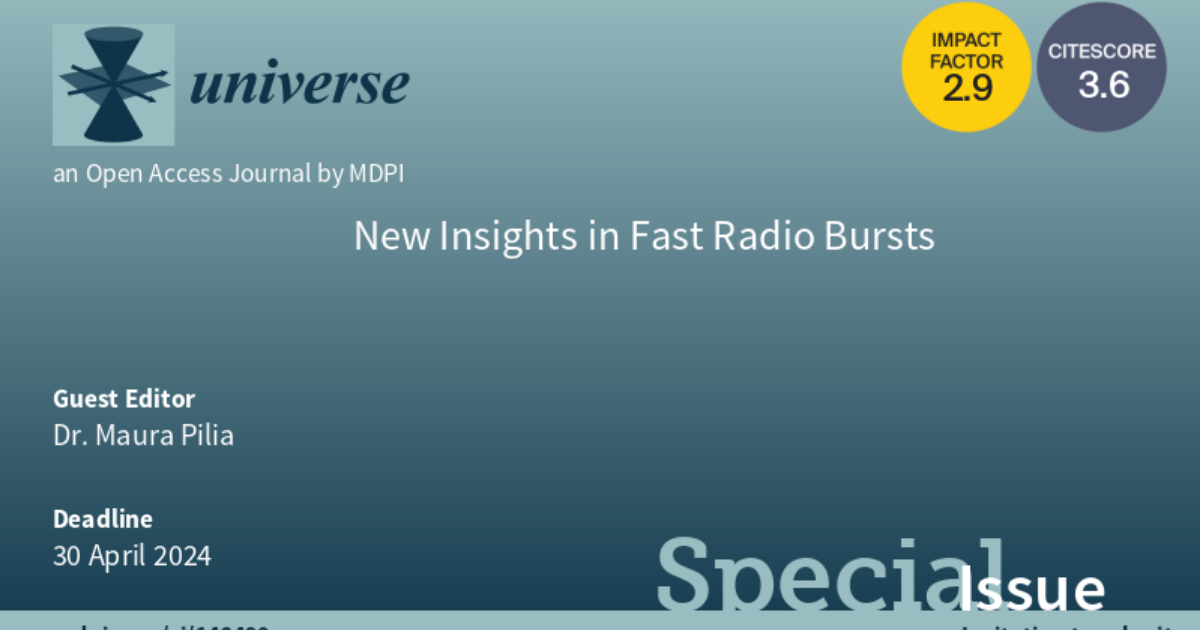New Insights in Fast Radio Bursts
A special issue of Universe (ISSN 2218-1997). This special issue belongs to the section "Space Science".
Deadline for manuscript submissions: 30 April 2024 | Viewed by 1136

Special Issue Editor
Special Issue Information
Dear Colleagues,
The field of Fast Radio Bursts (FRBs) is one moving at a surprising pace. Discovered in 2007, with a one-off burst, this adolescent population now counts ~600 (published) members, among which a small fraction (~20) repeat.
The availability of new and dedicated instrumentation and techniques, offering unprecedented on-sky time and processing capabilities, has led to a revolution in the field in a matter of a few years.
This Issue will address the latest advances in observations and methods and it will cover some of the latest developments in theory and cosmology.
The Issue will include, but not be limited to:
- Repeaters vs. one-offs: an observational bias?
- FRB periodicity: what have we learned from it?
- The Interstellar and Intergalactic medium: the perspective of FRBs
- New facilities and how they look at FRBs
- Where does the parameter space of transients extend to?
- Traditional vs. future methods to look for fast transients
- What have we learnt from FRB localisation?
- What are FRBs best for in cosmology?
- FRBs and magnetars: in which ways are they related?
Dr. Maura Pilia
Guest Editor
Manuscript Submission Information
Manuscripts should be submitted online at www.mdpi.com by registering and logging in to this website. Once you are registered, click here to go to the submission form. Manuscripts can be submitted until the deadline. All submissions that pass pre-check are peer-reviewed. Accepted papers will be published continuously in the journal (as soon as accepted) and will be listed together on the special issue website. Research articles, review articles as well as short communications are invited. For planned papers, a title and short abstract (about 100 words) can be sent to the Editorial Office for announcement on this website.
Submitted manuscripts should not have been published previously, nor be under consideration for publication elsewhere (except conference proceedings papers). All manuscripts are thoroughly refereed through a single-blind peer-review process. A guide for authors and other relevant information for submission of manuscripts is available on the Instructions for Authors page. Universe is an international peer-reviewed open access monthly journal published by MDPI.
Please visit the Instructions for Authors page before submitting a manuscript. Submitted papers should be well formatted and use good English. Authors may use MDPI's English editing service prior to publication or during author revisions.
Keywords
- fast radio bursts
- repeating and periodic FRBs
- new facilities
- novel methods
- localisation
- FRBs and ISM and IGM
- FRBs and cosmology
- FRBs and magnetars





